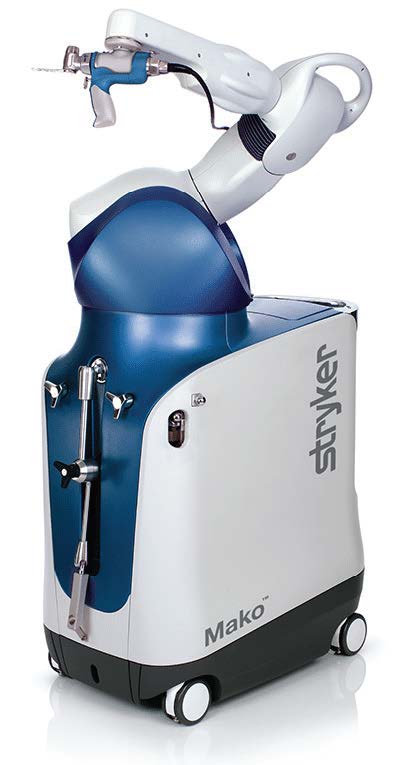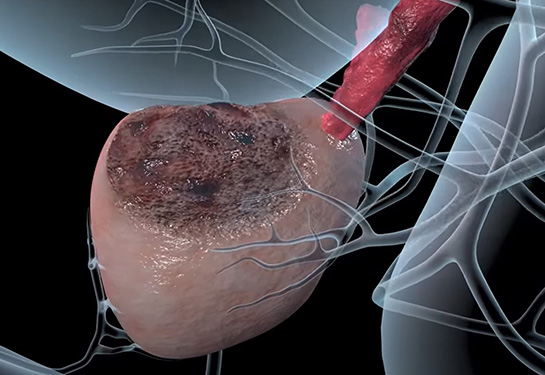UC Davis Health adds to its collection of robotic technology
Innovative technology allows surgeons to personalize total knee, partial knee and total hip replacement procedures
UC Davis Health has added the Stryker Mako SmartRobotics system to its collection of innovative technology. The expansion allows the health system to offer patients a technologically advanced option for hip and knee replacements.
The Mako SmartRobotics system is the latest orthopaedic technology that offers the potential for a higher level of patient-specific implant alignment and positioning. This new approach means surgeons can create an individualized 3D plan and perform joint replacement surgery using a surgeon-controlled robotic arm that helps execute the procedure with a high degree of accuracy.
“The Mako robotic system allows us to create a more personalized plan for each patient based on their unique anatomy before surgery," said Bahareh Nejad, medical director of robotic surgery. “UC Davis Health is always looking for the latest technology and techniques to implement. Having this type of innovative robotic technology demonstrates our dedication to quality and patient-centered healthcare.”
UC Davis Health is always looking for the latest technology and techniques to implement. Having this type of innovative robotic technology demonstrates our dedication to quality and patient-centered healthcare.” —Bahareh Nejad
Benefits to patients

Clinical studies have shown the Mako SmartRobotics system demonstrated the potential to offer patients several potential benefits, including:
- Less pain
- Less need for opiate pain relievers
- Reduction in length of hospital stay
- Less need for inpatient physical therapy
- Improved knee flexion
- Greater soft tissue protection in comparison to other techniques.
“Our goal is to get our patients back into their normal routine and activities as quickly and safely as possible,” said Gavin Pereira, clinical professor and orthopaedic surgeon, who performs these surgeries at UC Davis Health. “This state-of-the-art technology is transforming the options for hip and knee replacement procedures, and I am excited to offer it to patients throughout the Sacramento region.”
What is the Mako SmartRobotics system?
Mako SmartRobotic combines three key components -- 3D CT-based planning, AccuStop haptic technology and insightful data analytics -- into one platform that has shown better outcomes for total knee, total hip and partial knee patients.
Mako Total Knee combines Stryker’s advanced robotic technology with its clinically successful Triathlon Total Knee System, which enables surgeons to have a more predictable surgical experience with increased precision and accuracy. During surgery, the surgeon guides the robotic arm during bone preparation to execute the predetermined surgical plan and position the implant.
Mako SmartRobotics for Partial Knee replacement is a treatment option designed to relieve the pain caused by joint degeneration due to osteoarthritis that has not yet progressed to all three compartments of the knee. By selectively targeting only the part of the knee damaged by osteoarthritis, surgeons can resurface the diseased portion of the knee while helping to protect the healthy bone surrounding the knee joint. Studies have shown that robotic arm assisted partial knee replacement leads to greater accuracy of implant position compared to manual partial knee replacement procedures.
Mako SmartRobotics for Total Hip is a treatment option for adults who suffer from degenerative joint disease of the hip. During surgery, the surgeon guides the robotic arm during bone preparation to prepare the hip socket and position the implant according to the predetermined surgical plan. The results lead to greater bone preservation with Mako Total Hip compared to manual surgery, according to a controlled matched-paired study to measure acetabular bone resection.
“The Mako system allows surgeons to visualize the procedure pre-operatively so that we can make a clear plan on how to position the implant all before entering the operating room,” said Pereira. “During surgery, we can validate that plan and make any necessary adjustments, while the robotic arm then allows us to execute that plan with a high level of accuracy and predictability.”





